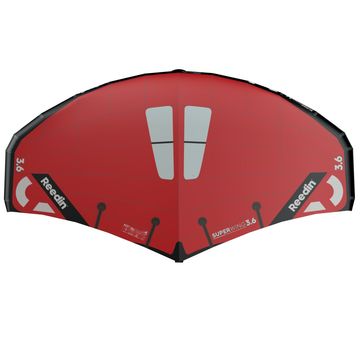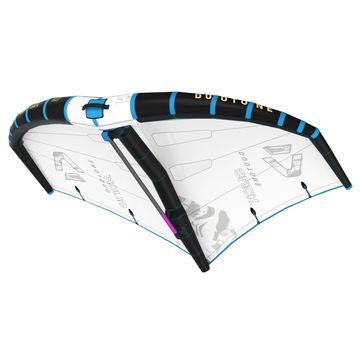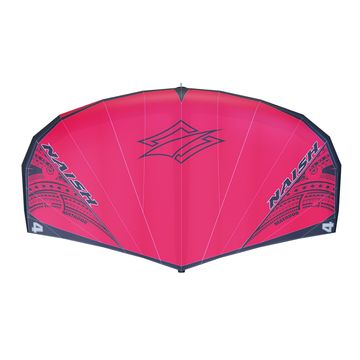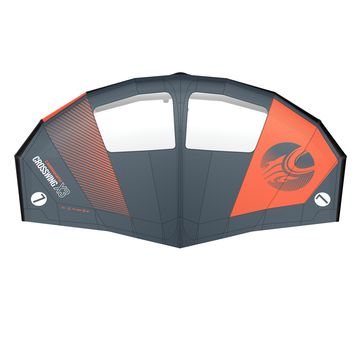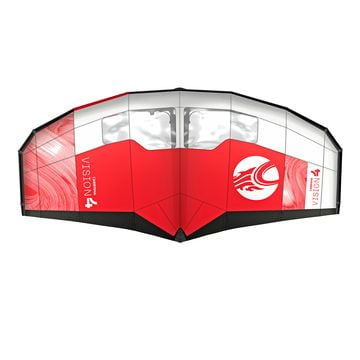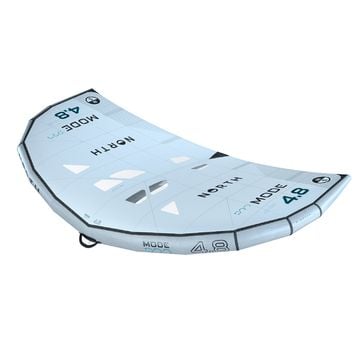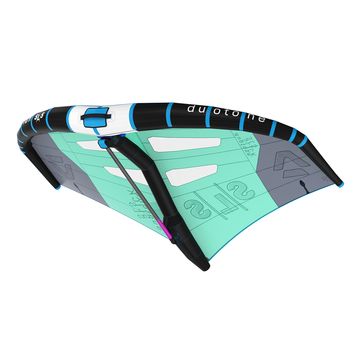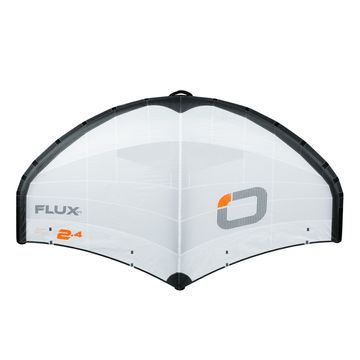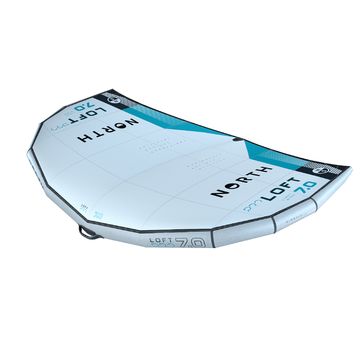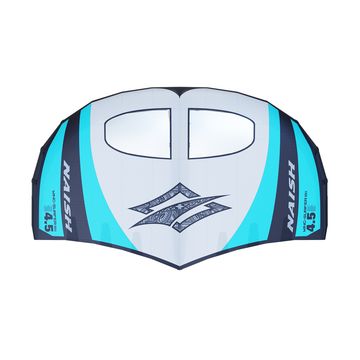Understanding Different Wing Shapes
Wings come in different shapes and give a different feeling so here we have a quick look at why brands have multiple wings in their range and where they may shine. Each brand have their own way of doing things so you will see some differences in how they market their wings and with a range of prices for wings across the board it can be hard to get your head around what’s what.
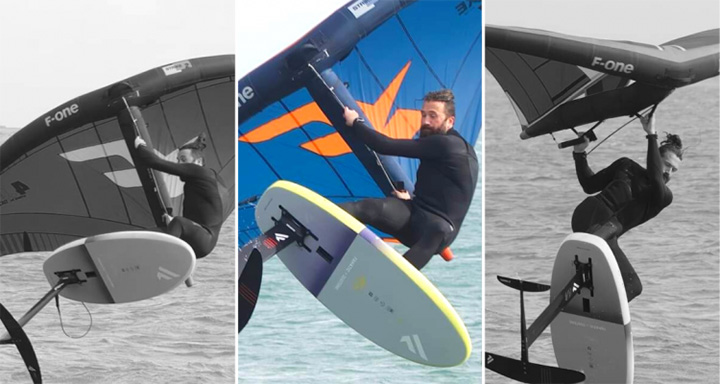
To start out with there is no wrong wing, whatever you can afford is going to help you understand how a wing works and how best to manoeuvre the wing to control power but you may not want to do is shell out on the most expensive wings at this stage as you will not get the most out of them and you are at higher risk of doing some damage to it whilst learning.
What makes a good beginner wing? Light and easy to handle are the two common words associated to almost every wing. Most wings now are pretty light and once the wind is in them you are actually trying to hold them down not lift them up. For someone new to the sport, control is the key ingredient. Just like with hydrofoils lower aspect wings are easier to control. The power will be generated smoothly and the wing will be fairly stable. So these wings will look a little rounder or squarer instead of longer from tip to tip.
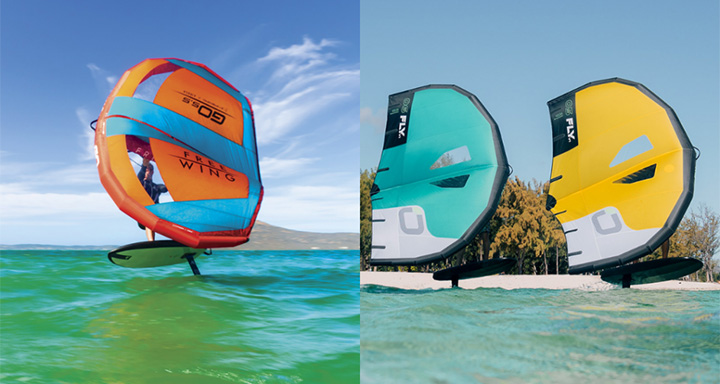
Airush Free Wing Go and Ozone Fly v1
You wont necessarily grow out of these wings but they will never be the fastest wings available. They are great for getting going early on with out lots of input from the rider and as they are stable they will drift well when you hold the leading edge handle and flag the wing out. Because of their lower aspect shape they will also rotate well meaning they will be good for learning some gybe variations and entry level freestyle.
Higher Performance Wings. If you want to point higher upwind/downwind, go faster and jump higher a higher performance wing will help you achieve this. Its not the only factor in doing all of the above as you will need a higher performance foil and a light weight board too but a more performance orientated wing wing help you get there. As wingfoiling is still in its infancy as a sport development is constant and with all the brands trying different thing its actually hard to say what is the best and it depends what sort of performance you want as to what will be better for you.
For most everyday riders not competing they will probably want to try their hand at several different disciplines or they will be dictated by their local conditions; some days its wavey, some days its light, some days its howling and some days its flat.
All Round Performance Wing: People wanting a wing for anything are in with the biggest of choice. Any wing will work as long as the size is right for the conditions. You may even notice in the brands marketing of its wings that they are not very specific, this is because wings really can do a bit of everything (whether this changes in the future remains to be seen). This is great as it then down what you like in a wing to narrow down the choice. Do you want windows, no windows, hard handles, soft handles or a boom? Each wing will feel a little different due to the materials used, handles, the aspect ratio, the depth of the canopy, the stiffness, the curve of the leading edge and the tension of the canopy.
The disciplines that will suit most wings are:
Freeride – Waves – Down Winding – Freestyle
There are a few more specifically designed wings that do kind of sit out on their own in terms of performance.
Light Wind Performance: For some these may be the only wings you have. If you live in an area where winds speeds only ever reach 15knots then these bigger wings are for you. They tend to be 6m up to 8m and low aspect. The big wings wont ever be high aspect as the you need to keep the wingspan down otherwise the lower wing tip will catch the water whilst riding or you will have to fly the wing at an angle which is less efficient. This lower aspect shape combined with their size and stiffness will mean they are great at pumping and getting going.
Racing and Speed: You can only go fast if you are in control. In light winds it seems to be about getting the biggest and most stable wing you can but in strong winds its all about stability. A whole host of new materials are entering the wing and kite worlds all promising to be lighter and stiffer than any previous material. These materials will no doubt unlock more performance in speed and also efficiency meaning you will be able to get closer to the wind at higher speeds.
Materials: All of the first generation wings have come from brands with a background in windsurfing, kitesurfing and sailing. These first generations of wings used materials that were common place in these other sports but as wingfoiling has progressed designers have begun to use different materials and they have designed the wings with the experience and knowledge of winging instead of any other sport which was not possible a few years ago. By coincidence wingfoiling came along as some kitesurf brands have been experiment and releasing new materials into their kites. Material such as Aluula, Ho’okipa and N-Weave are replacing Dacron leading edges and struts. These new materials are a composite meaning layers are bonded together meaning high tech fibres can be used without glue. This new way of creating a woven material is stronger, lighter and more stretch resistant so pressures can be higher which gives more rigidity to wings.
Its not just the leading edge and frame that are getting an update. Many brands are looking for different materials for the canopy too. Wings are subject to a different load to a kite and you may notice in your older wings that the canopy is not as taught as it once was.
What does this new material do? A stiffer frame means the wing tips wont flex as the wind hits the wing this has several effects on a wing and how it feels to the rider.
1. The wing will point closer to the wind and be easier to control whilst going up wind because the when the wing tips move you loose efficiency and stability of the wing so a stiffer wing will be easier to hold at angles close to the wind.
2. Wing tips flex when a gust hits a wing when you are sheeted in at any angle to the wind you loose shape in the canopy and this spills wind. This in turn looses power in the wing and a stiffer frame will have less flex so you will loose less power in gusts. Depending on how powered up you are this can be good or bad. In light winds when you are riding well with in your comfort zone a stiffer frame will loose less power in any gust and therefor keep you going fast. On the windier days when you are just about in control having a wing tip that flexes off and spills wind in the stronger gusts will help maintain control where as a stiffer wing tip will not do this as well so you will need to adjust the angle of your wing to spill power so you may need to be more pro active in dealing with gusts.
3. The weight of the wing will be significantly lighter than a traditional material wing of the same size. On the water this weight saving is more apparent to the rider in lighter winds as well as when you are flagging the wing out on a wave or riding down wind.
4. If you into jumping then you will notice the stiffer wings are easier to get more height. Get them up to speed and send a big floaty jump with the wing above your head and you will feel the stiffer wings effect as it pulls you up and then floats you down. Again because there is less flex the wing keeps its shape better with you hanging off the bottom of it.
Content created by King of Watersports KOW Copyright

